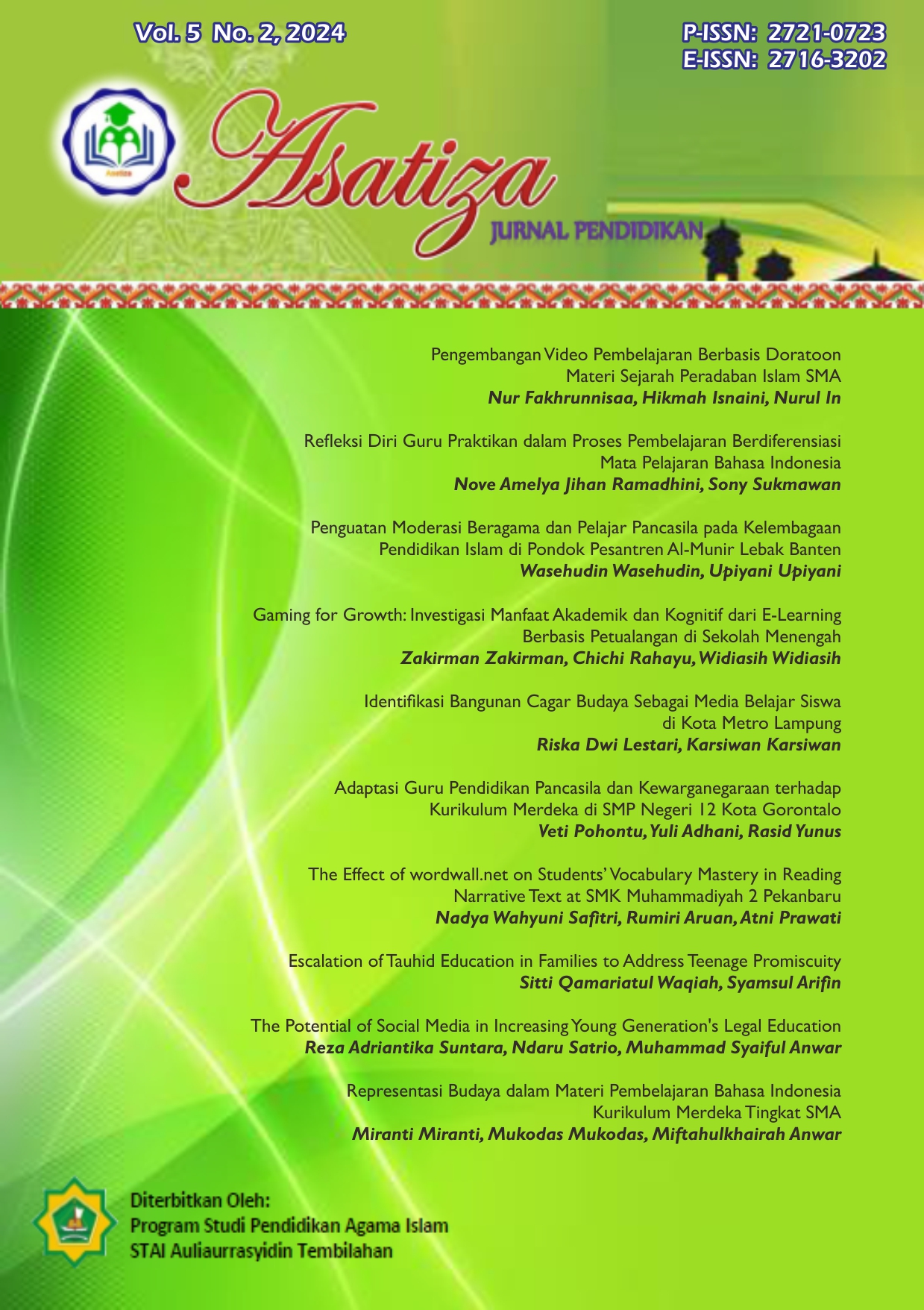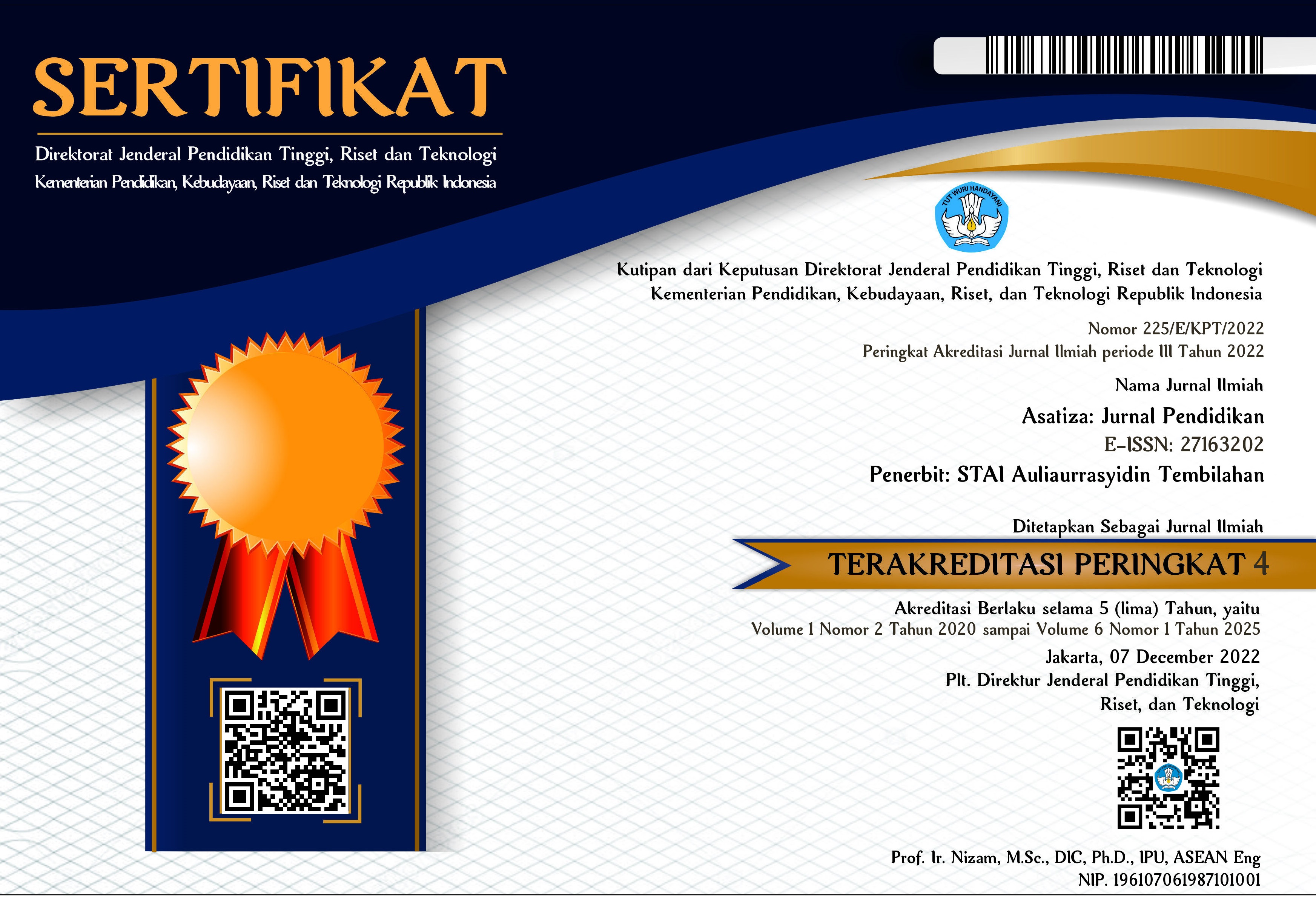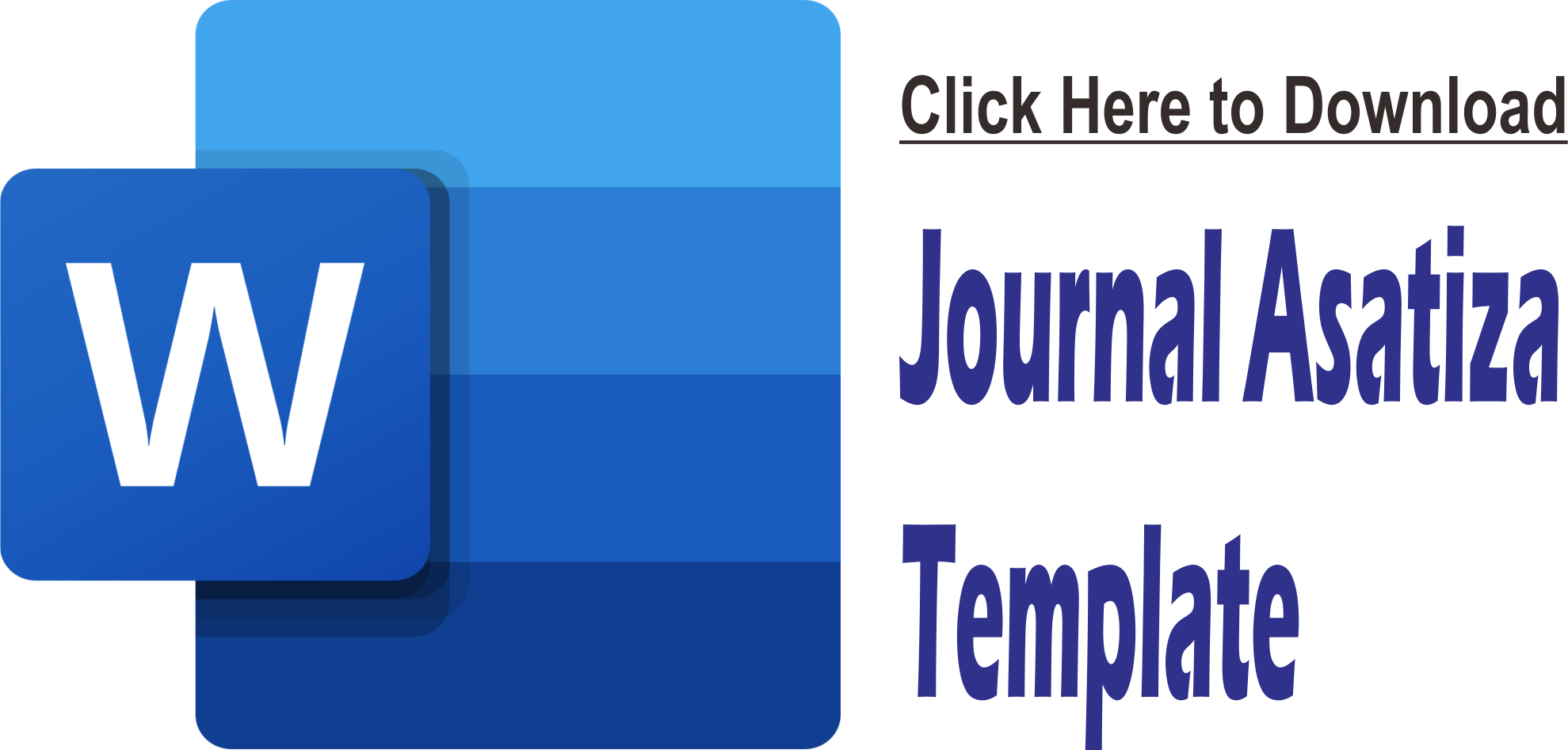Representasi Budaya dalam Materi Pembelajaran Bahasa Indonesia Kurikulum Merdeka Tingkat SMA
DOI:
https://doi.org/10.46963/asatiza.v5i2.1866Keywords:
Merdeka Curriculum, Cultural Representation, Indonesian Language LearningAbstract
In the context of the development of the Merdeka Curriculum in Indonesia, this study highlights the importance of understanding how cultural values are reflected in Indonesian language learning at the high school level. The research method used is descriptive using qualitative analysis to explore the integration of local culture and the use of local languages in the “Cerdas Cergas Berbahasa dan Bersastra Indonesia” textbook for grades X, XI, and XII. The findings show that the adoption of folklore, customs and local languages in the curriculum not only enhances students' understanding of Indonesia's cultural heritage, but also provides a rich and meaningful learning experience. As such, this integration provides a strong national identity for students and reinforces a sense of pride in the nation's culture. This research makes an important contribution to understanding how education can be an effective vehicle for enriching and maintaining cultural diversity in Indonesia.
Downloads
References
Adiasa, I. K. (2023). Analisis wacana buku teks Bahasa Indonesia kelas XII. Jurnal Pendidikan DEIKSIS, 5(2), 1-7. https://doi.org/10.59789/deiksis.v5i2.196
Aulia, F. T., & Gumilar, S. I. (2021). Cerdas Cergas Berbahasa dan Bersastra Indonesia untuk SMA/SMK Kelas X. Jakarta: Kementerian Pendidikan, Kebudayaan, Riset, dan Teknologi.
Barthes, R. (2007). Membedah Mitos-mitos Budaya Massa. Yogyakarta & Bandung: Jalasutra.
Bishop, R., Berryman, M., Cavanagh, T., & Teddy, L. (2009). Te kotahitanga: Addressing educational disparities facing Maori students in New Zealand. Teaching and Teacher Education, 25(5), 734-742. http://dx.doi.org/10.1016/j.tate.2009.01.009
Brown, J. S., Collins, A., & Duguid, P. (1989). Situated cognition and the culture of learning. Educational Researcher, 18(1), 32-42. https://doi.org/10.3102/0013189X018001032
Darling-Hammond, L., Wei, R. C., Andree, A., Richardson, N., & Orphanos, S. (2009). Professional Learning in the Learning Profession: A Status Report on Teacher Development in the United States and Abroad. National Staff Development Council. https://learningforward.org/docs/default-source/pdf/nsdcstudy2009.pdf
Kusmayadi, I. (2021). Cerdas Cergas Berbahasa dan Bersastra Indonesia untuk SMA/SMK Kelas XI. Jakarta: Kementerian Pendidikan, Kebudayaan, Riset, dan Teknologi.
Marisa, M. (2021). Inovasi kurikulum “Merdeka Belajar” di era society 5.0. Santhet: Jurnal Sejarah, Pendidikan, dan Humaniora, 5(1), 66-78. https://ejournal.unibabwi.ac.id/index.php/santhet/article/view/1317
Marwati, H., & Waskitaningstyas, K. (2021). Cerdas Cergas Berbahasa dan Bersastra Indonesia untuk SMA/SMK Kelas XI. Jakarta: Kementerian Pendidikan, Kebudayaan, Riset, dan Teknologi.
Mayer, R. E. (2009). Multimedia learning (2nd ed.). Cambridge University Press. https://doi.org/10.1017/CBO9780511811678
Soendari, T. (2012). Metode penelitian deskriptif. Bandung: UPI.
Syahbana, A., Asbari, M., Anggitia, V., & Andre, H. (2024). revolusi pendidikan: Analisis kurikulum Merdeka sebagai inovasi pendidikan. Journal of Information Systems and Management (JISMA), 3(2), 27–30. https://doi.org/10.4444/jisma.v3i2.935
Ulumuddin, A., & Wismanto, A. (2014). Bahan ajar Bahasa Indonesia ranah sosial budaya bagi penutur asing (BIPA). Sasindo: Jurnal Pendidikan Bahasa dan Sastra Indonesia, 2(1), 15-35. https://doi.org/10.26877/sasindo.v2i1%20Januari.917
Vygotsky, L. S. (1978). Mind in Society: The Development of Higher Psychological Processes. Harvard University Press.
Downloads
Published
Issue
Section
License
Copyright (c) 2024 Miranti Miranti, Mukodas Mukodas, Miftahulkhairah Anwar

This work is licensed under a Creative Commons Attribution-ShareAlike 4.0 International License.
Authors who publish with this journal agree to the following terms:
1. Copyright on any article is retained by the author(s).
2. The author grants the journal, right of first publication with the work simultaneously licensed under a Creative Commons Attribution shareAlike 4.0 International License that allows others to share the work with an acknowledgment of the work’s authorship and initial publication in this journal.
3. Authors are able to enter into separate, additional contractual arrangements for the non-exclusive distribution of the journal’s published version of the work (e.g., post it to an institutional repository or publish it in a book), with an acknowledgment of its initial publication in this journal.
4. Authors are permitted and encouraged to post their work online (e.g., in institutional repositories or on their website) prior to and during the submission process, as it can lead to productive exchanges, as well as earlier and greater citation of published work.
5. The article and any associated published material is distributed under the Creative Commons Attribution-ShareAlike 4.0 International License











2.png)



